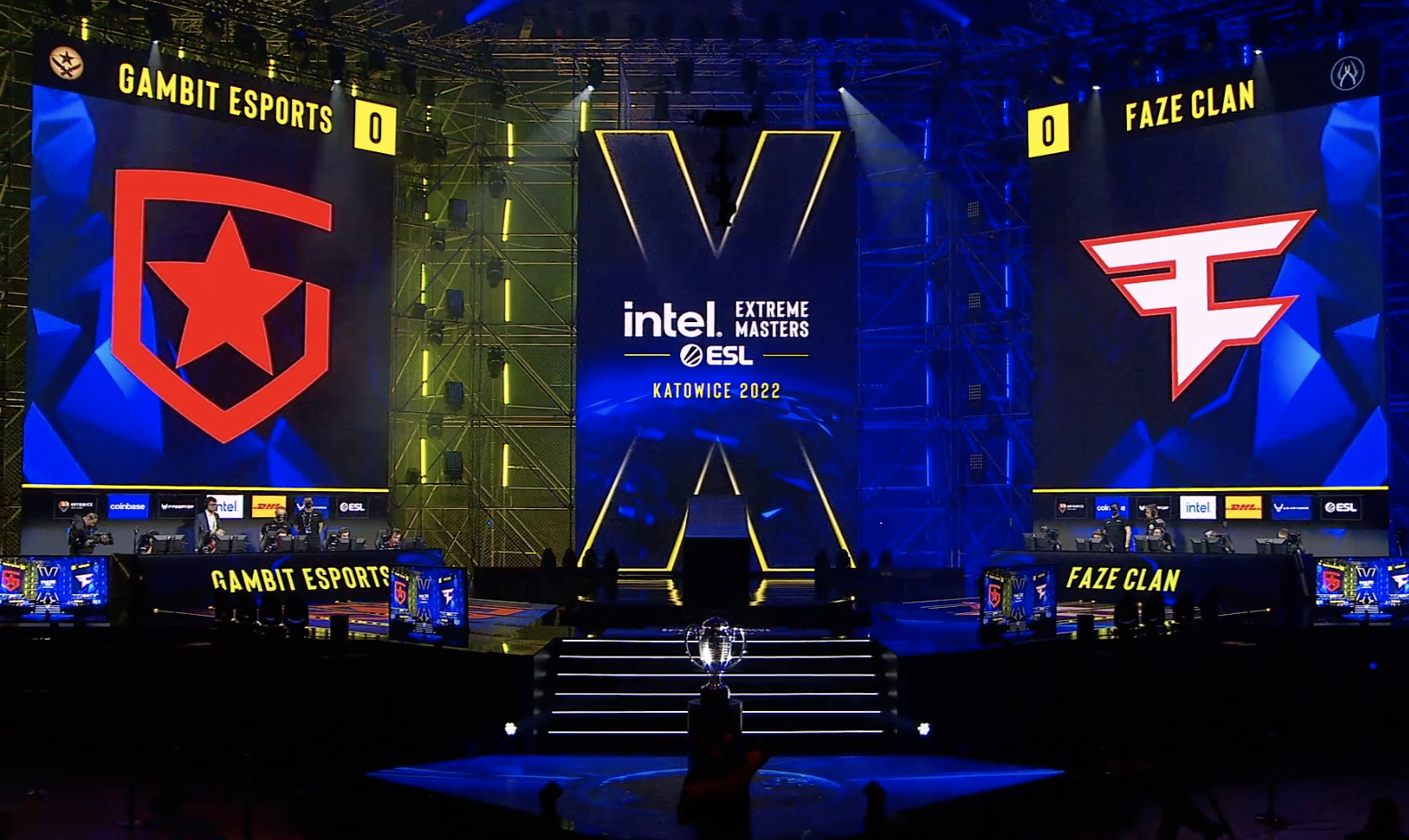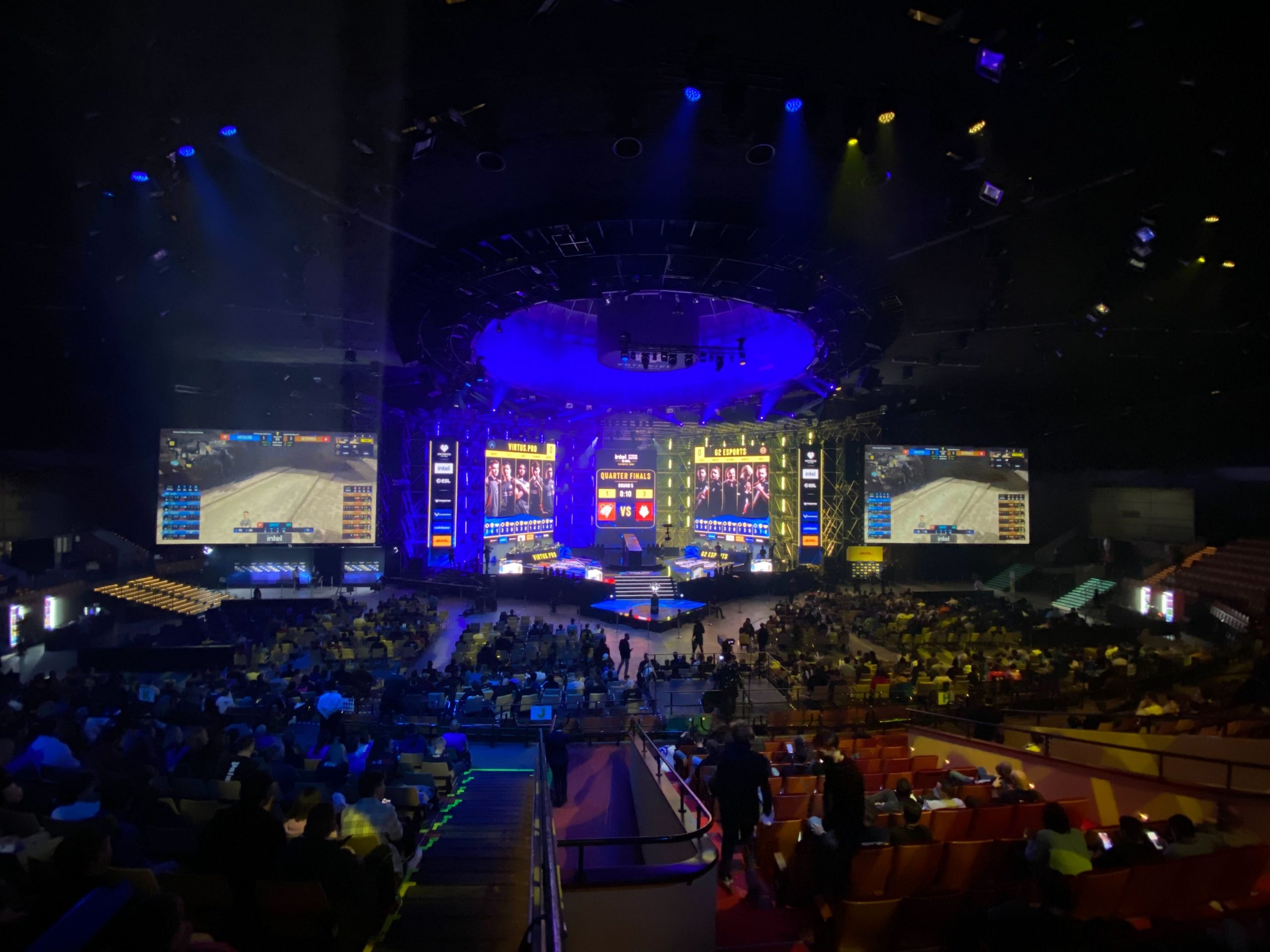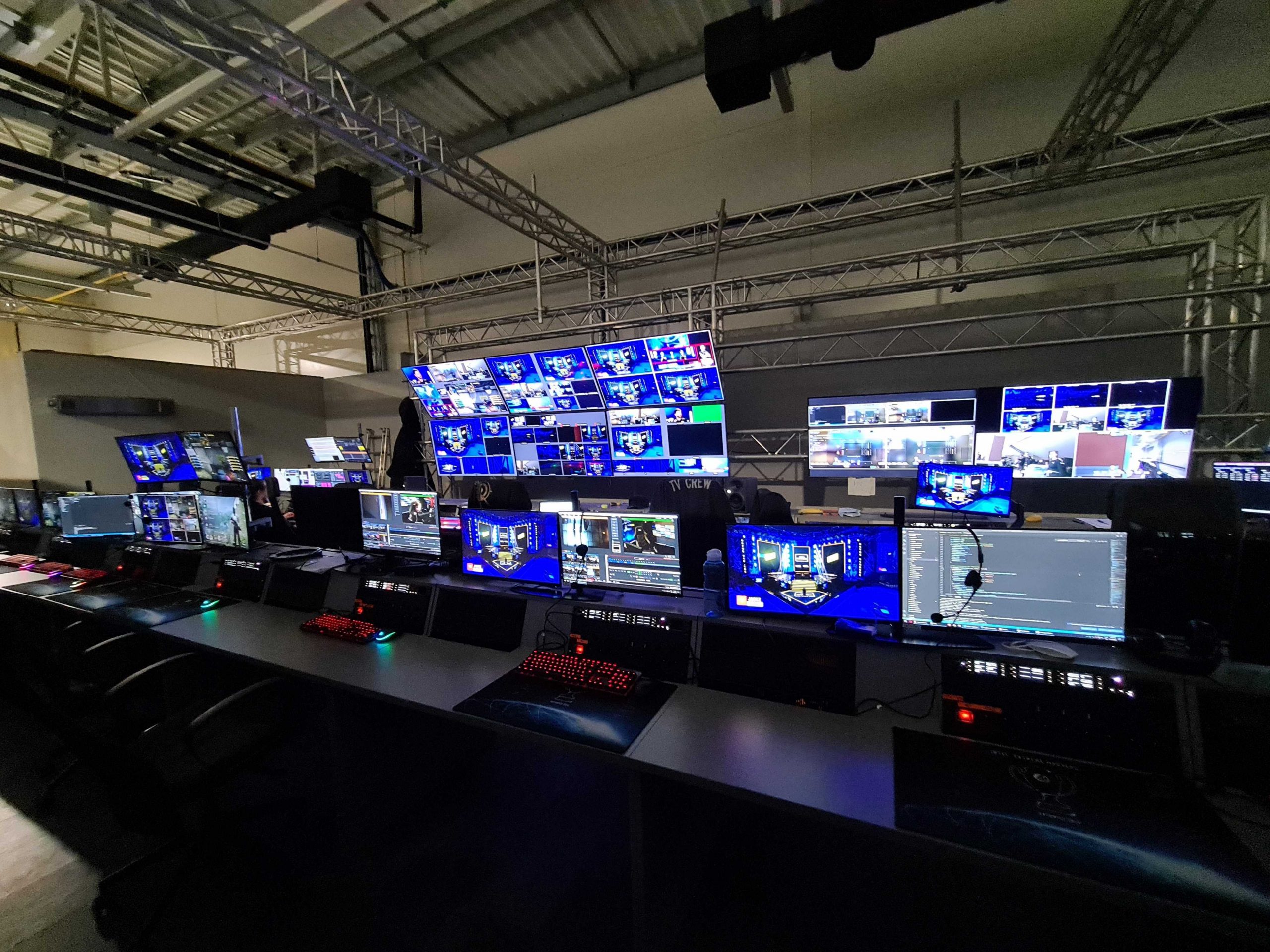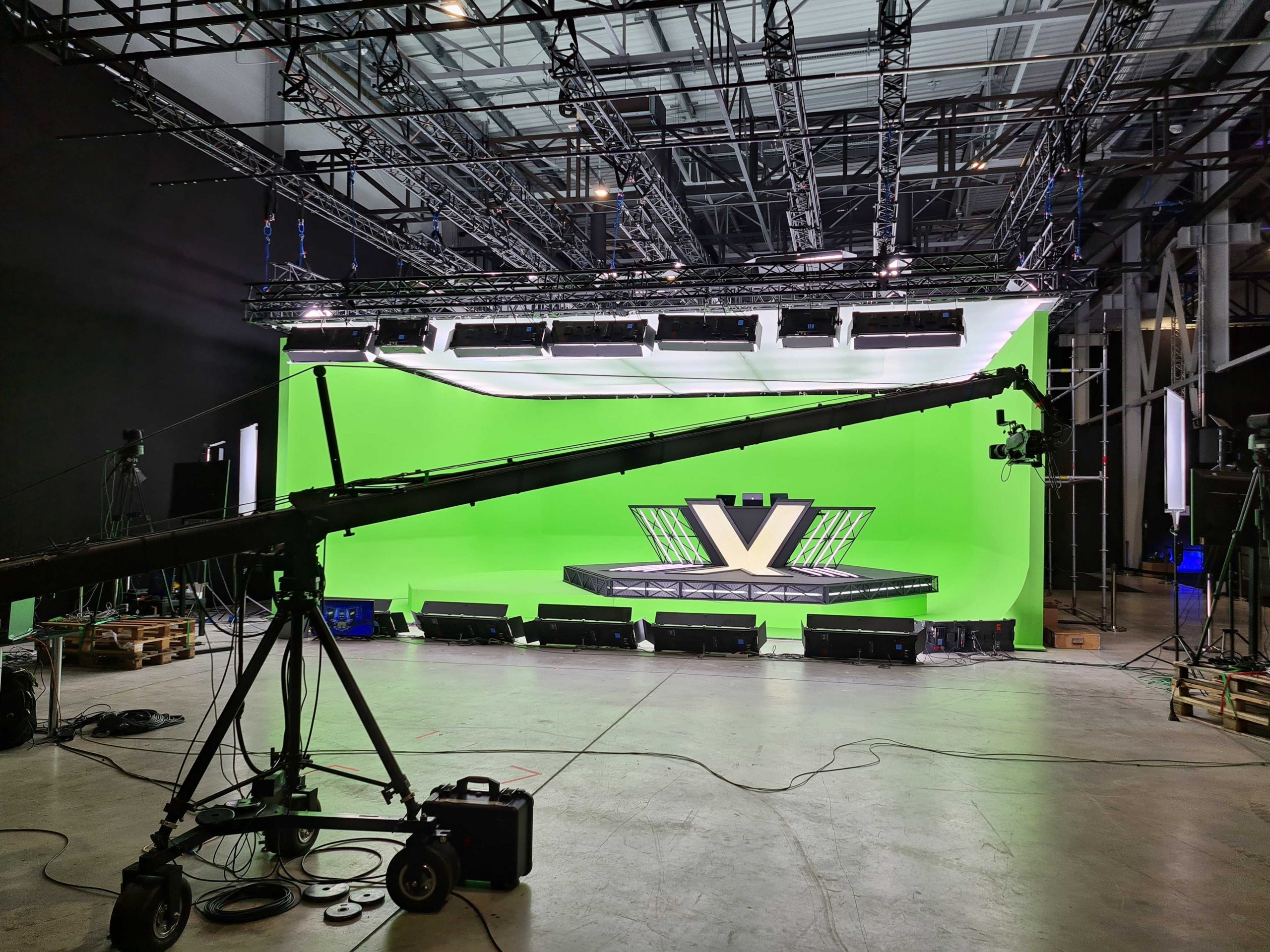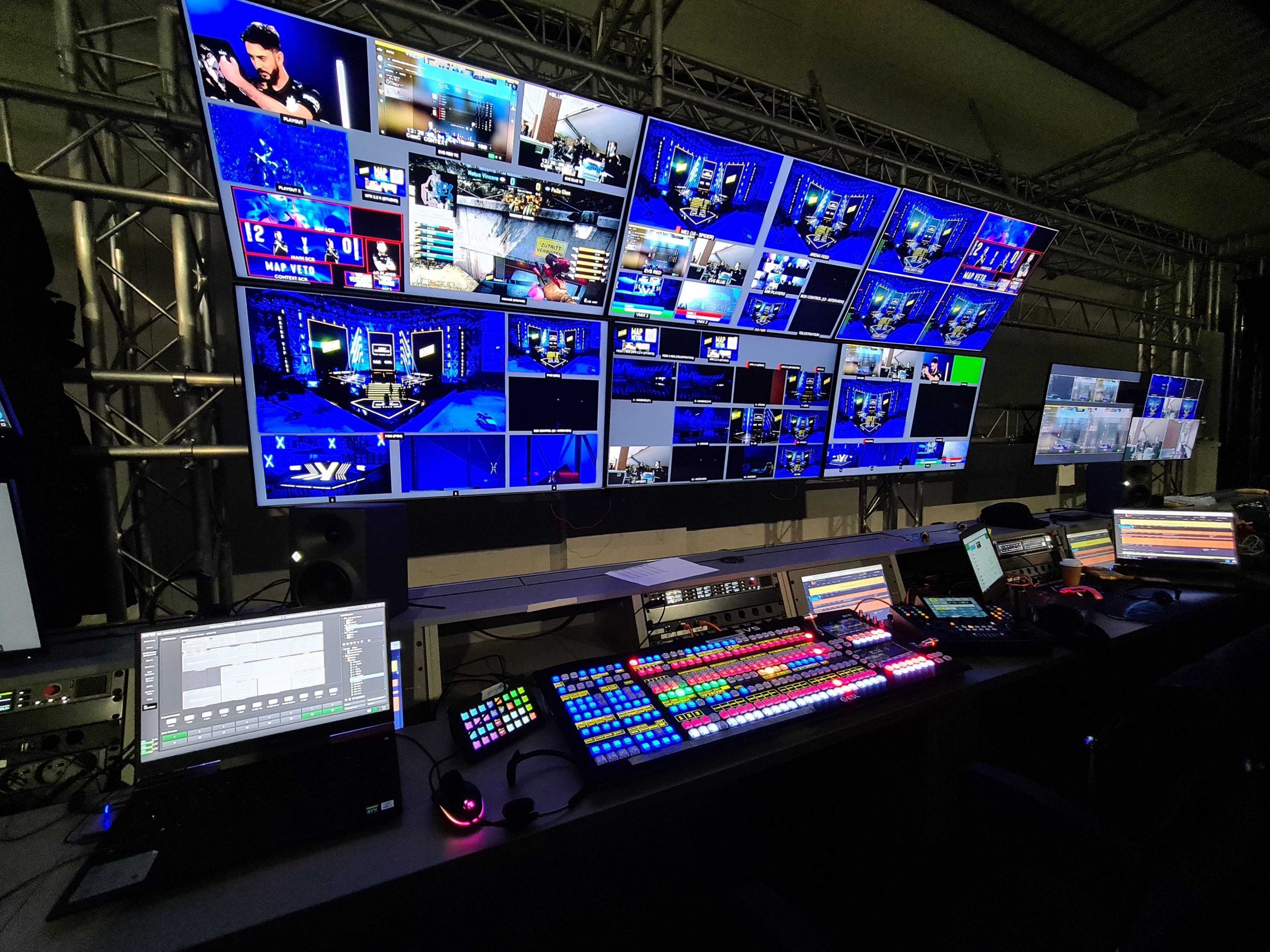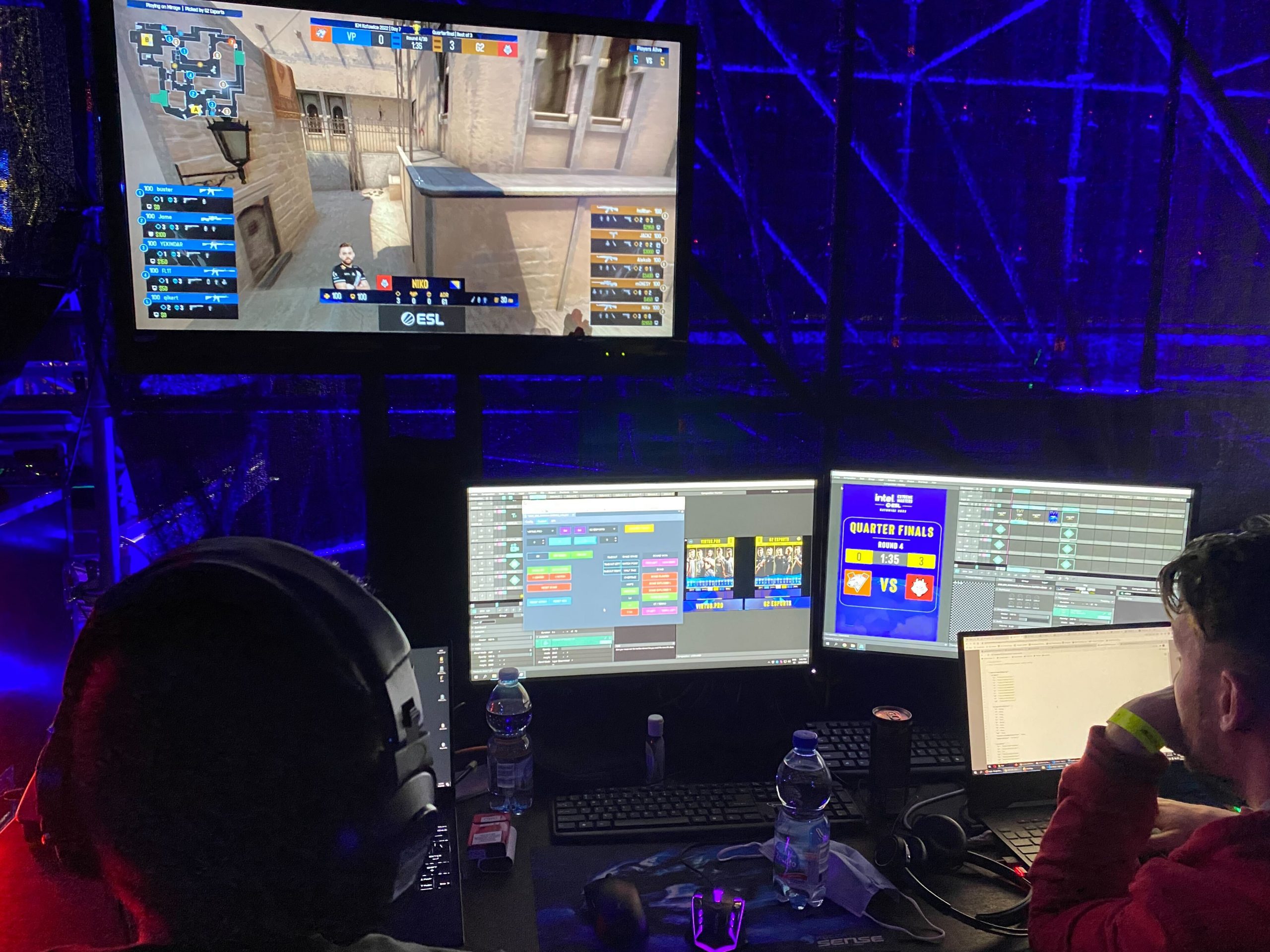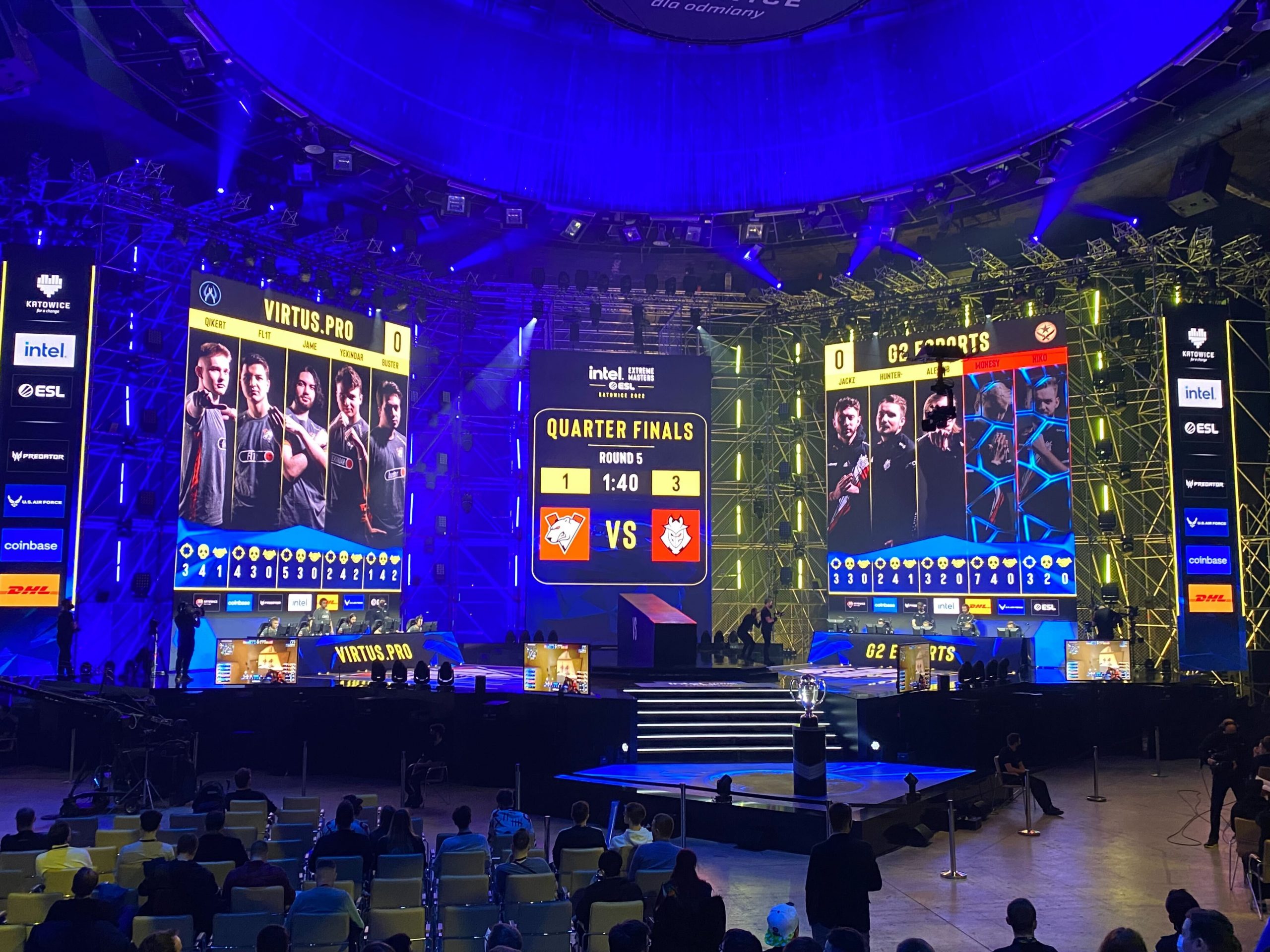ESL Gaming Brings Back Big-Time, In-Person Esports Events With IEM Katowice in Poland
The LAN event is the biggest to be held in front of audience since the pandemic began
Story Highlights
The esports industry was among the first to get live broadcasts rolling again after the pandemic arrived, but the events have largely been online and without fans. That changes this weekend: ESL Gaming’s Intel Extreme Masters (IEM) Katowice event has taken over the Spodek arena for the largest LAN esports event with in-person fans in nearly two years. And, despite the current fraught scene in Eastern Europe, fans have flocked to the Polish city to experience the event first-hand.
“We can safely say that this is the biggest LAN event with fans since the pandemic began at the same event back in 2020,” says ESL Gaming Senior Broadcast Engineer Adrian Segarceanu, who is serving as EIC in Katowice. “Needless to say, everybody feels the pressure of this, but we also put a lot of effort into making sure this goes smoothly. It brings a lot of pride and joy to see such a big in-person event happen after all this time.”
The Return: ESL Brings in Big Production for Big Homecoming
IEM Katowice is being held in front of an audience at the Spodek for the first time since 2019 (the 2020 edition was played without fans in attendance, and the 2021 tournament was played online), when it hosted a whopping 174,000 fans onsite and attracted 232 million viewers over the duration of the multi-day event. That puts plenty of pressure on the broadcast team bringing one of the year’s largest esports events to fans in the arena and around the world.
“I would say that IEM Katowice is one of the big challenges of the year,” says Segarceanu. “It’s such a large-scale event with so many things to take into account when it comes to all the technologies and how they are put together. IEM Katowice is, along with IEM Cologne, the marquee event for our CS:GO calendar, so there is always a lot of pressure on operational departments to come up with innovations that will set those events apart from other ESL events or events operated by our competition.
“There is also a history that goes back 10 years that we need to honor,” he continues. “We need to make sure that, from a technical standpoint, IEM Katowice is flawless, so nothing can interfere with players’ putting their stamp on history or with the viewing experience for the people at home or onsite.”
The Workflow: Split Between Spodek and ESL Studios in Katowice
Instead of OB trucks rolled up for the event, the production is handled from the master-control room at ESL Gaming’s EMEA production hub in Katowice. One of largest and most sophisticated esports-production facilities in Europe, the ESL facility features 8,000 sq. meters of office and production facilities with five large TV studios.
All signals from the arena are being sent to the studio, where the final mix is done, and the venue mix is sent back to Spodek for the in-arena show. ESL has dark fiber running between the production hub and Spodek, carrying 24 signals from Spodek and 12 back with the help of Riedel Mediornet Micron HD. For audio, ESL brought its Dante network to Spodek from its MCR to make it easier to route signals across.
“Riedel is playing a major role here: for distribution and bridging our studio with Spodek,” says Segarceanu.
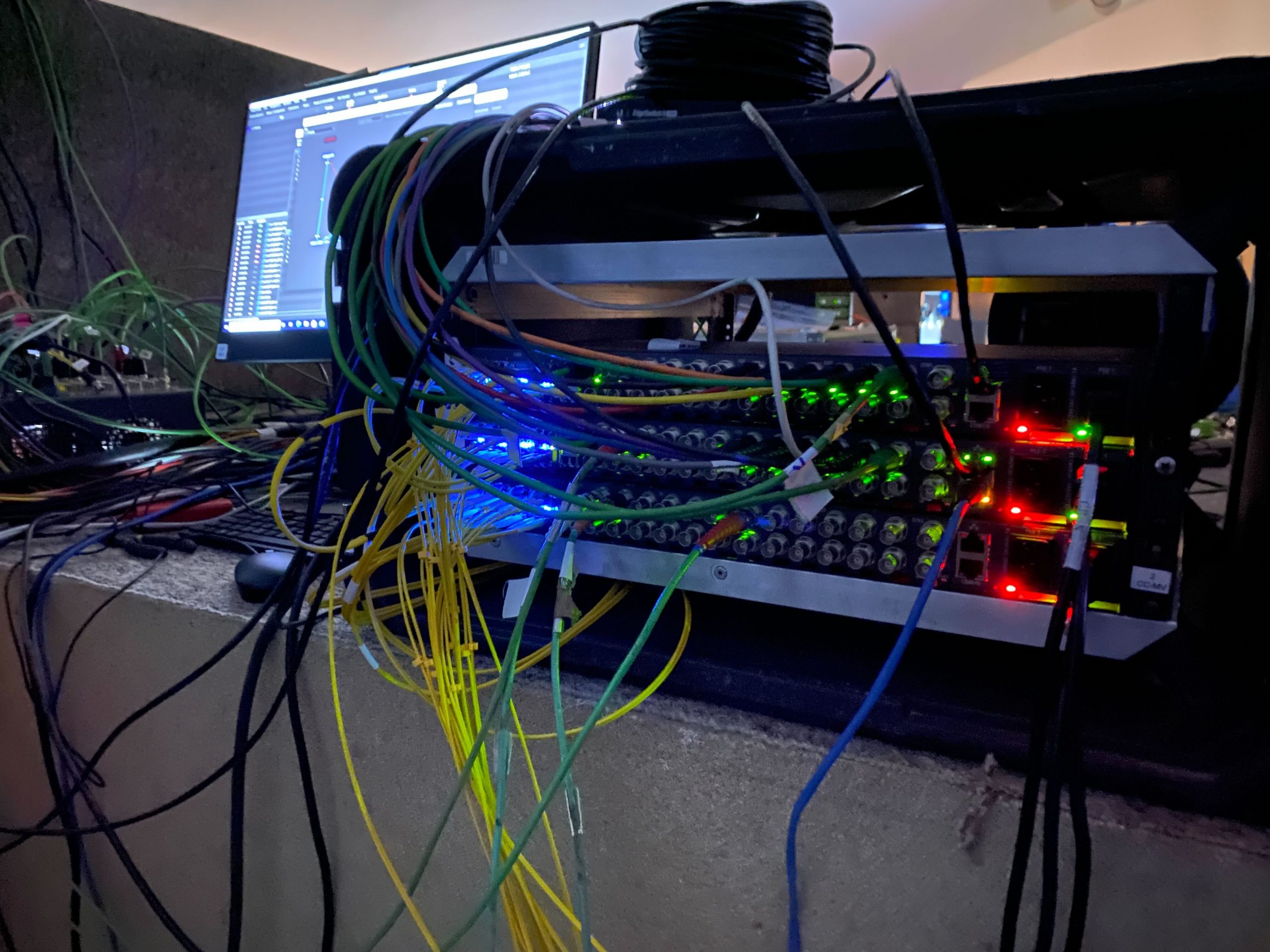
With crew located at Spodek, ESL Studios, and, remotely, the comms infrastructure for IEM Katowice required a complex architecture.
A total of 25 cameras (mostly Sony HDC-2500’s) are used for the production, including a SpiderCam wired aerial system, jib, RF Steadicam, an additional Steadicam with Aviwest encoder, two RF stage cameras, and 12 player cameras. Other key angles include a longshot and cameras for the crowd, interviews, and casters.
The analysis desk is located on a greenscreen set at the ESL Studio and features one jib with encoded lens and RedSpy tracking system for virtual production, along with two Panasonic AW-UE150 PTZ cameras tracked for virtual production.
Other key equipment for the production includes an EVS DYVI GPU-based switcher with three PMY stackable processing modules, an Allen & Heath Dlive S5000 audio mixer with DM48, Riedel Artist 64 intercoms both in Spodek and at the ESL Studio (connected with VoIP cards), Unity Intercom software for remote comms, two 2X EVS XT3 replay systems (one is used for in-game 2X super-slo-mo replays), and Ross Xpression graphics.
“EVS brings a lot to the table here: we are using the XT3 for replays and a DYVI cluster as our main vision mixer,” says Segarceanu. “Bright is our partner for virtual production, and the quality of their services is extremely high. For broadcast needs, we partnered up with Presteigne, and, so far, we couldn’t be happier with our choice.”
The Crew: Onsite, at the Studio, Working Remotely
Working at the studio, at Spodek, and remotely from home, ESL’s crew comprises more than 100 personnel. Remote operators are handling parts of the in-game, in-game AR powered with Unreal, player-reaction replay operators, and CG Editorial, among other roles. They are using Parsec to remote into and control the PCs and also have the program feed and multiviewers distributed to them. For comms, ESL is using Unity Intercom bridged into its Riedel Artist mother-station via Dante.
“Across all people involved in IEM Katowice,” says Segarceanu, “I would say the mix is probably 50% onsite and 50% remote.”
The Stage: Bringing in New Features While Respecting the Iconic Design
For its biggest tentpole event of the year, ESL always tries to up the ante when it comes to the staging at IEM Katowice. DLP serves as ESL’s stage-production partner, and “they manage to improve the design while keeping the core of the concept,” says Segarceanu.
“We try to bring something new every event,” he adds, “but, at the same time, we want to keep the core of what makes IEM Katowice stage design iconic. This time, we added more kinetic elements, more special effects, better LED pixel pitch, and an augmented game integration for when we are in-game with a lot of animations and data triggered by match events.”
Watch the IEM Katowice live stream now on ESL TV and Twitch. The event runs Feb. 25-28 with the CS:GO Grand Finals taking place at 5:00 local time on Sunday.
